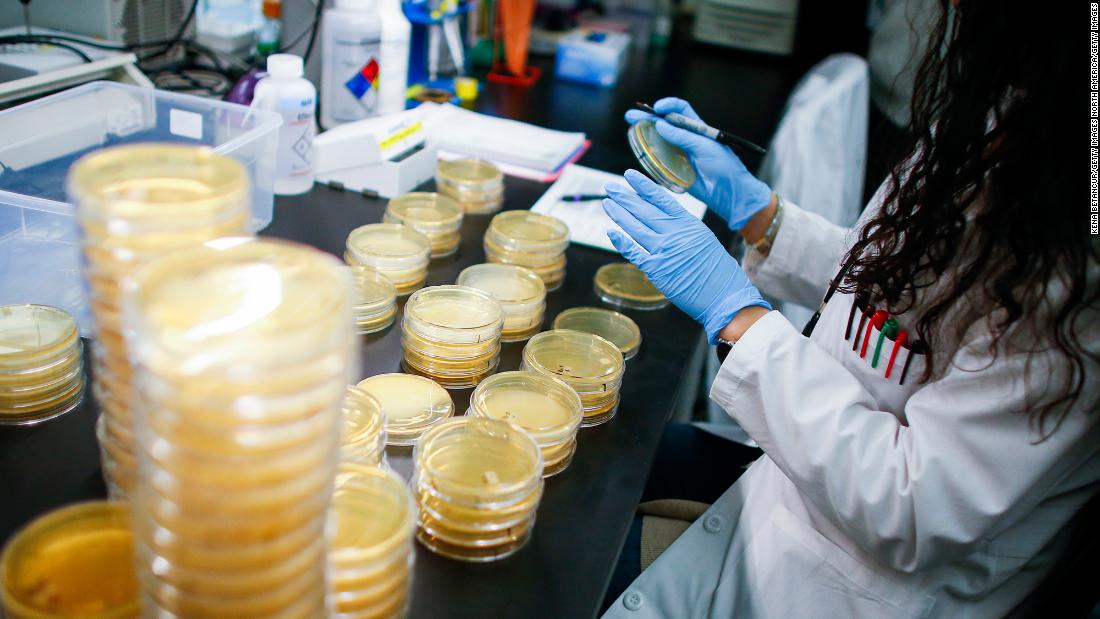[ad_1]
A woman in Oregon and a high school boy in Washington state are presumptive positives, which means their tests were conducted at local labs but the results have not yet been confirmed by the CDC.
The other two mystery cases are from California.
An older woman in Santa Clara County who had been hospitalized for a respiratory illness tested positive for the virus but had no relevant travel history or contact with anyone infected, health officials said.
“This new case indicates that there is evidence of community transmission, but the extent is still not clear,” said Dr. Sara Cody, director of the county’s public health department.
The other California case is a Solano County woman who is hospitalized at UC Davis Medical Center and in serious condition.
The two counties are about 90 miles apart. The Santa Clara patient had not traveled to Solano County, officials said.
With an increase in cases with unknown origins and a change in testing guidelines across the country, CDC officials said they were hoping to have every state and local health department testing for the virus by the end of next week.
Here’s what else you need to know heading into the weekend:
States announce presumptive positives
Oregon Health Authority officials confirmed the state’s first presumptive case Friday — a Washington County resident with no history of related travel nor close contact with another confirmed case, the agency said in a news release.
“As such, public health officials are considering it a likely community-transmitted case, meaning that the origin of the infection is unknown,” the release said.
Officials said the patient is in isolation.
“We are awaiting confirmation of the test results from the Centers for Disease Control and Prevention, but at this time we are considering this a presumptive case,” said State Epidemiologist and State Health Officer Dean Sidelinger in a statement.
Officials also haven’t traced how a Washington state high school boy was infected. Those test results were also presumptive positive.
The student, a Snohomish County resident, is doing well, said Dr. Chris Spitters, interim health officer for the Snohomish Health District.
The patient is one of two presumptive positive cases in the state.
A woman from King County tested positive at the state’s Public Health Laboratory and is in home isolation, according to a release from the Washington State Health Department. Her test is awaiting confirmation from the CDC.
She visited South Korea for about two weeks earlier this month, according to Dr. Jeff Duchin, health officer at Public Health of Seattle & King County. The woman returned and worked for one day before noticing symptoms. She developed a fever, cough, some nausea, a headache and a sore throat, Duchin said in a news conference Friday. Officials are now investigating the woman’s workplace and anyone she may have come in contact with, he said.
More cases reported internationally
France has 73 registered cases, Spain 50, and the United Kingdom 23, the governments reported.
Iran’s death toll reached 43, with 593 cases reported, according to the health ministry via state-run news.
States are now conducting tests
Following a change in testing guidelines, the CDC is working to expand the number of labs that can test for the virus.
Testing kits from the CDC arrived in California Friday and additional kits were expected soon, according to a press release from the California Department of Public Health.
“These new testing protocols and resources will help California medical experts identify and treat COVID-19 cases, trace potential exposures and better protect public health,” California Gov. Gavin Newsom said in a statement.
But some testing kits initially sent to state and local labs were flawed, delaying their ability to test for the virus.
“This has not gone as smoothly as we would have liked,” Dr. Nancy Messonnier, director of the CDC’s National Center for Immunization and Respiratory Diseases, said Friday.
Guidelines for who should be tested were also broadened by the CDC earlier this week after the first case of unknown origin emerged in California.
Initial guidance called for testing only if a patient had a travel history to China or had been in close contact with someone who had been there, CDC Director Dr. Robert Redfield said.
The Solano County patient now in serious condition wasn’t initially tested at UC Davis nor the Northern California hospital she was transferred from because she did not fit the CDC criteria for testing at the time.
“As soon as that case was recognized, we met and we revised our case definition for persons under investigation,” Redfield said.
The guidance was updated on the CDC’s website Thursday.
“Today that has been posted along with a new health advisory that the recommendation should be when a clinician or individual suspects coronavirus, then we should be able to get a test for coronavirus.”
CNN’s Nadia Kounang, Jon Passantino, Alta Spells, Jay Croft and Carma Hassan contributed to this report.
[ad_2]
Source link




